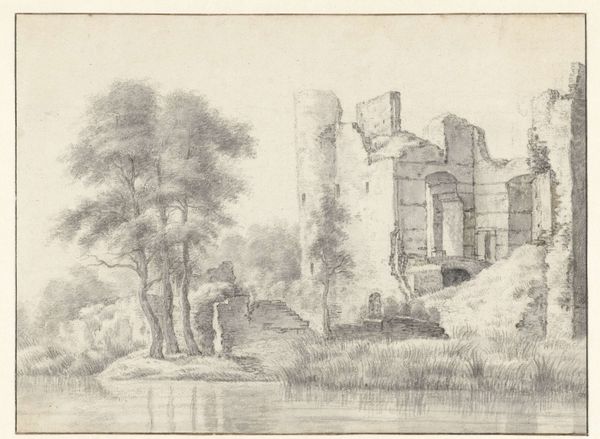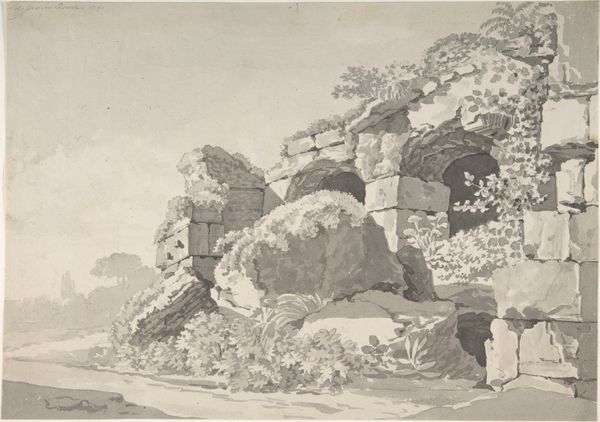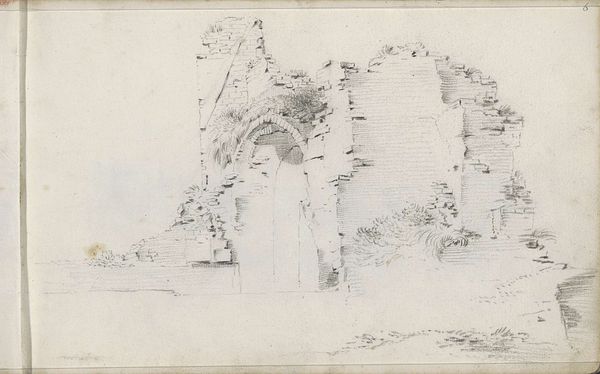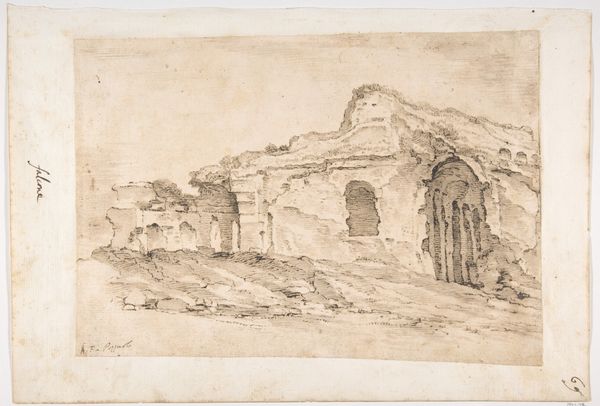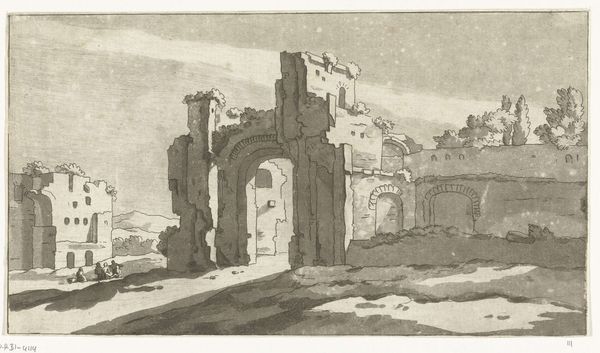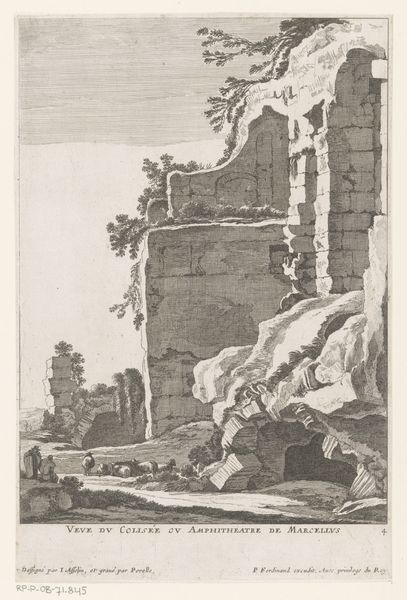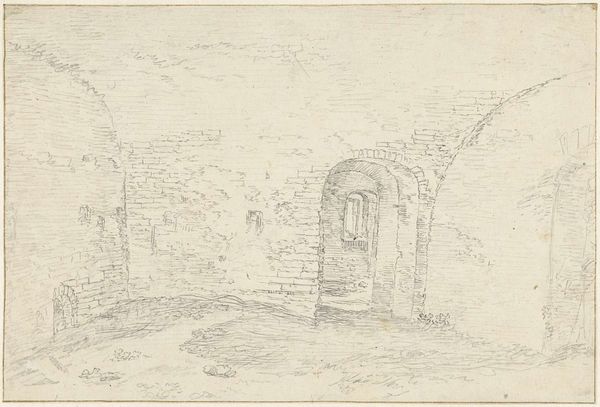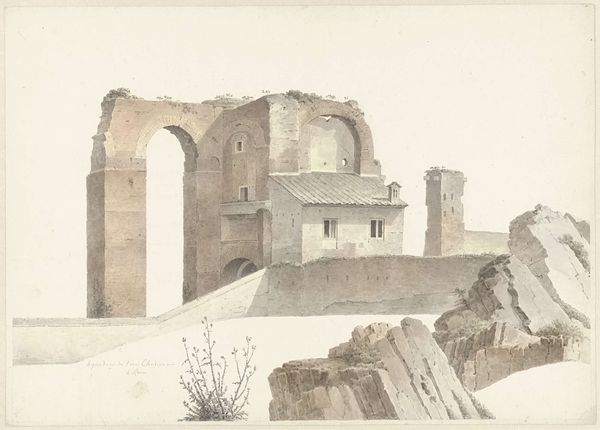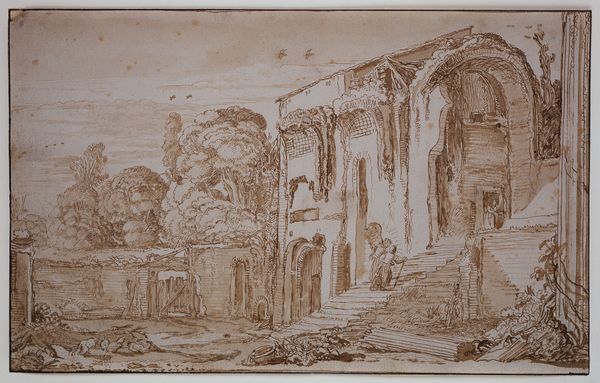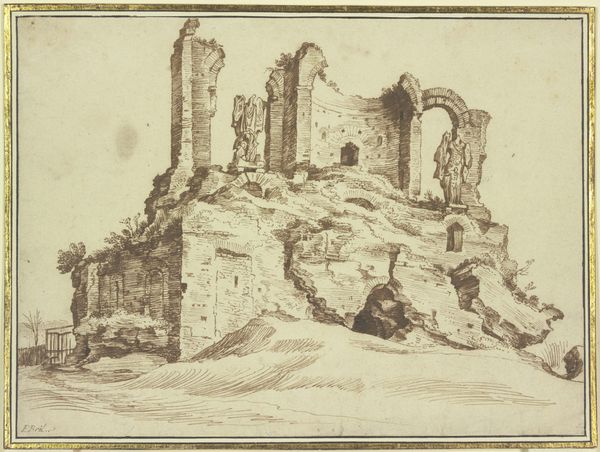
Grafmonument of graven met Dorische zuilen in rots gehouwen en gelegen op afstand van 2 mijl van Syracuse 1778
0:00
0:00
drawing, pencil
#
pencil drawn
#
drawing
#
neoclacissism
#
landscape
#
form
#
geometric
#
pencil
#
line
Dimensions: height 180 mm, width 256 mm
Copyright: Rijks Museum: Open Domain
Curator: This drawing, held here at the Rijksmuseum, is by Louis Mayer and dates to 1778. Its full title is “Grafmonument of graven met Dorische zuilen in rots gehouwen en gelegen op afstand van 2 mijl van Syracuse” which translates roughly as “Grave monument or graves with Doric columns hewn in rock and located at a distance of 2 miles from Syracuse.” Editor: A stark, rather desolate scene—the architectural forms emerge tentatively from the rough landscape through a light wash of graphite. Its softness almost undermines its structural representation of the Doric, making me question whether this monument is even still standing today. Curator: The Doric order does evoke notions of stability, permanence, and solidity. Yet, as ruins, these forms represent an end—the entropic consumption of time. So Mayer’s soft, light-handed technique could highlight that tension, playing on how such monuments can, and will, ultimately dissolve back into the earth from which they came. Editor: Yes, but the geometry is essential here. Note how Mayer organizes the geometric and irregular masses, how line is used to create value and depth with the very clear architectural renderings compared to the vaguer, almost hazy rocks in the background. Do you see how the lines imply the presence of orthogonal planes behind each building and monument? Curator: Precisely. These ruins are potent symbols, emblems of past empires, and perhaps a suggestion of future impermanence. In that regard, these forms are more than arrangements of geometrical primitives; they represent tangible links to the Classical past. In Mayer's time, such classicism stood for civic virtue and ideal form. The image carries both that power and that premonition of decay, a very strong statement, considering the enlightenment. Editor: This pencil drawing offers us a fascinating glimpse into a way of representing architectural mass and void. The lines suggest structure; the shading softens those presumptions. The interplay is remarkably effective. Curator: It leaves one contemplating the weight of history—both the grandeur and the ephemerality of human endeavor, distilled into form. Editor: Exactly; it invites a dialogue between the solid and the transient, the ordered and the organic, that's incredibly poignant.
Comments
No comments
Be the first to comment and join the conversation on the ultimate creative platform.
